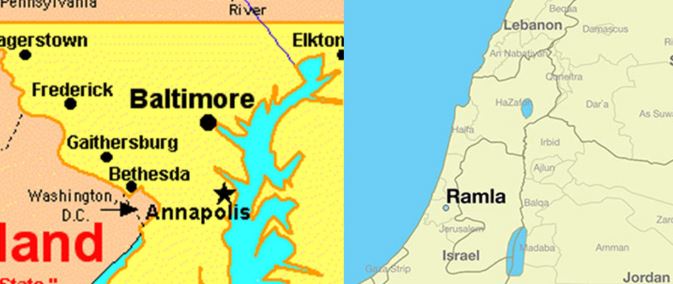Baltimore and Ramla
A Tale of Two Cities

If someone told me there is a community in the U.S. that has a situation strikingly similar to my own in Israel, I might not have believed it. But I’ve come to believe that Baltimore and Israel can learn a lot from each other, with the hope of improving our respective societies.
I grew up in Ramla, an Israeli city of Jews and Arabs where I barely knew any Jews. We never interacted, except in passing. They called my neighborhood “the ghetto” because people born there nearly never made it out. I was one of the lucky ones. I went to college and decided to use my intellect to help other young people.
From colleagues, friends and news reports, I came to understand things in Ramla are not that different than in Baltimore, another “mixed city” where whites and minorities — African-Americans, Hispanics, immigrants —live in the same place but live very different lives.
If you compare the incomes in Baltimore, you see white residents earn nearly twice as much as their African-American peers, according to the U.S. Census Bureau. Meanwhile in Israel, roughly 50 percent of the Arab population lives under the poverty line, according to the National Insurance Institute. Moreover, 36 of Israel’s 40 towns with the highest unemployment rates are predominantly Arab. In both societies, there is a lack of quality public schools.
In Baltimore, the Census Bureau found 37 percent of African-Americans ages 20-24 are unemployed. Interestingly, that same percentage of Arabs in Israel between 19-23 do not work or study. Half of female Arabs in Israel are not in any employment or academic setting.
Whether in Israel or Baltimore, the age of 18 should be a time when a young person becomes independent, responsible and embarks on their life journey. However, many young Arabs in Israel who should be studying or working are doing absolutely nothing. One reason is that much of Israel’s job market and attendant options for social mobilization revolve around the army. Most Arab citizens, however, are exempt from army service because of the long history of conflict between the two sides.
As in Baltimore, which in recent years has experienced an influx of jobs in cybersecurity, life sciences and information technology, Israel is known for its tech-centric job market. But to gain access to the “startup nation,” you need a proper education.
Lackluster education and low levels of interaction with the majority Jewish population effectively deny access to Israel’s major business centers or social and professional networks. In part because of this, levels of crime in the Arab population group are higher than the national Israeli average, with arrest rates being 40 percent higher among Arab youth.
I’ve come to believe that Baltimore and Israel can learn a lot from each otherNasreen Hadad Haj-Yahya
I propose a number of policy recommendations that could help Israel’s Arab population, and could be applicable to any society that suffers from socioeconomic segregation and related challenges.
First, we must implement a more practical, career-oriented educational model in our Arab schools. This includes proficiency in Hebrew and an increased focus on STEM (science, technology, engineering, mathematics).
Israel must invest in geographically-convenient and culturally-sensitive career and academic centers for young Arabs.
Also, the government should dedicate time and financial resources to renovating infrastructure and creating employment opportunities for Arab citizens.
Even though I live halfway around the world, I can’t help but wonder if Israel could learn from the ways in which Baltimore is attempting to shrink its racial and socioeconomic gaps. Whether in Israel or Baltimore, the integration of young minorities into society should be elevated to a statewide and national priority.
After all, solving this problem will simultaneously generate momentum for economic growth and, most importantly, increase our respective communities’ overall sense of solidarity.
